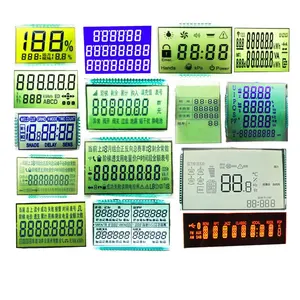Introduction to Small LCD Display
The small LCD display is a compact and versatile electronic component widely used in a plethora of devices requiring visual output. These displays utilize liquid crystal technology to render text, images, and graphics with precision. Their small size frequently makes them ideal for applications in personal gadgets, industrial equipment, and consumer electronics such as digital watches, handheld devices, and appliances. With advancements in technology, the reliability and quality of small LCD displays continue to improve, making them more crucial in modern electronic design.
Types of Small LCD Displays
Small LCD displays come in various types, each designed for specific applications and functionalities. Understanding the available types can help businesses and consumers choose the right display for their needs:
- Character LCD Displays: Typically used for displaying alphanumeric characters, these are ideal for simple user interfaces such as digital clocks and basic electronic devices.
- Graphical LCD Displays: These displays support graphical outputs and are suitable for applications requiring intricate visual details, such as smart meters and portable gaming devices.
- Touchscreen LCD Displays: Integrated with touch capabilities, these displays allow for intuitive interaction, commonly found in smartphones and modern appliances.
- Segment LCD Displays: These are designed to show specific segments of information (such as digits), and are famously utilized in calculators and clocks.
Applications of Small LCD Displays
Small LCD displays are prevalent across various industries due to their unique attributes and adaptability:
- Consumer Electronics: Found in mobile phones, tablets, cameras, and appliances, small LCD displays deliver vivid colors and sharp images.
- Medical Devices: Used in portable medical equipment like heart rate monitors and diagnostic devices, providing clear outputs for medical professionals.
- Automotive Displays: Integrated into dashboards for displaying essential data like speed, fuel levels, and navigation interfaces.
- Industrial Equipment: Employed in control panels and monitoring systems to ensure accurate readings in manufacturing settings.
Features and Advantages of Small LCD Displays
The features of small LCD displays contribute significantly to their widespread use and popularity. These advantages include:
- Compact Size: Their small dimensions allow for design flexibility and integration into various products without compromising space.
- Energy Efficiency: Small LCD displays consume minimal power, making them ideal for battery-operated devices.
- High Resolution: Many models offer excellent pixel quality, ensuring sharp and clear visual output.
- Wide Viewing Angles: Users can view these displays from different positions without any distortion or loss of quality.
- Durability: Built to withstand varying environmental conditions, they are resistant to shock and deterioration, enhancing the longevity of the end products.






















































































































































































































